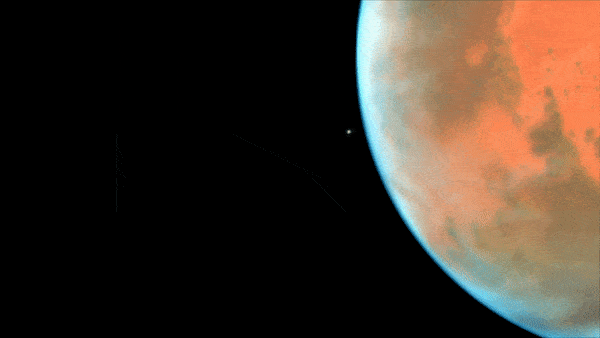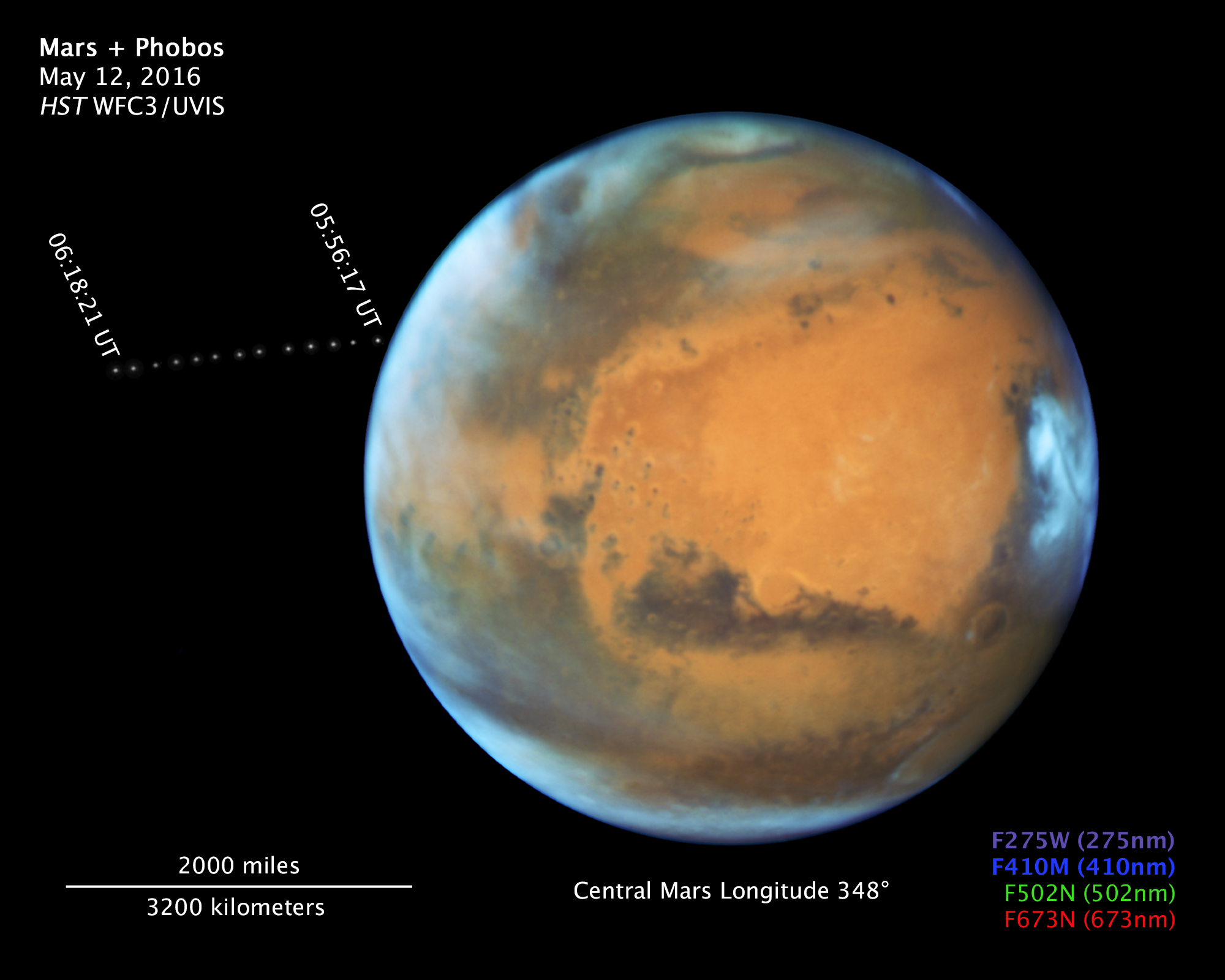Speedy Mars Moon Zips Around Red Planet in Amazing NASA Video
Mars' moon Phobos speeds around the Red Planet in a new view from the Hubble Space Telescope, twinkling against the black cosmic canvas along its orbit.
Phobos and the other Martian moon, Deimos, are named after the sons of Ares, the Greek god of war, who is known as Mars in Roman mythology. Phobos means "panic," but the July 20 NASA video featuring the moon will probably inspire more fascination than fear.
For one, Phobos has little time for scuffles — it has places to be! The moon takes only 7 hours and 39 minutes to complete one revolution around Mars, according to a statement by NASA. That means Phobos completes a single orbit around Mars before most Earthlings wrap up their 9-5 workdays. [The Moons of Mars: Phobos and Deimos in Pictures]
This is quite remarkable considering how long it takes other moons to orbit their parent planets — Earth's moon takes 28 days, which means that by the time the moon completes one orbit, Phobos has completed more than 84 around Mars. This Martian moon is closer to its parent planet than any other moon in the solar system is to its own planet, as Phobos hovers just over 3,700 miles (5,954 kilometers) above the Martian ground. One of the solar system's smallest moons, Phobos has a radius of just 6.9 miles (11.1 km).
Hubble and NASA released the new view of Phobos two weeks shy of the 48th anniversary of NASA's Mariner 7 spacecraft taking the first close-up image of the Martian moon. Almost half a century later, NASA created this new video by compositing 13 frames taken by the Hubble Space Telescope, one after another, to create a time-lapse of Phobos swinging along its orbit. According to NASA, Phobos took a short 22 minutes to travel the distance it did in the video.
Researchers now believe factors like size, speed and proximity are causing Phobos to be torn apart by Mars. According to NASA, the gravitational pull of Mars and the tidal interactions between Phobos and Mars are likely producing long, superficial grooves. According to scientists, the little moon is also getting drawn in to the Red Planet by approximately 6.5 feet (2 meters) every hundred years. In 30 million to 50 million years, Phobos will likely smack down onto the Martian surface or crumble apart into pieces that will then circle the Red Planet.
Follow Doris Elin Salazar on Twitter @salazar_elin. Follow us @Spacedotcom, Facebook and Google+. Original article on Space.com.
Breaking space news, the latest updates on rocket launches, skywatching events and more!

Doris is a science journalist and Space.com contributor. She received a B.A. in Sociology and Communications at Fordham University in New York City. Her first work was published in collaboration with London Mining Network, where her love of science writing was born. Her passion for astronomy started as a kid when she helped her sister build a model solar system in the Bronx. She got her first shot at astronomy writing as a Space.com editorial intern and continues to write about all things cosmic for the website. Doris has also written about microscopic plant life for Scientific American’s website and about whale calls for their print magazine. She has also written about ancient humans for Inverse, with stories ranging from how to recreate Pompeii’s cuisine to how to map the Polynesian expansion through genomics. She currently shares her home with two rabbits. Follow her on twitter at @salazar_elin.


